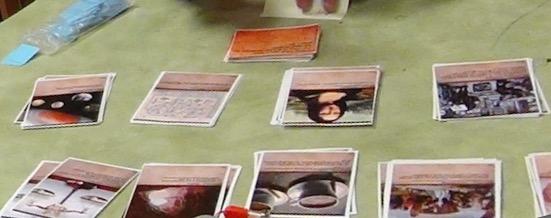Jan. 30, 2017
Students as Game Designers
While students can learn a wide range of skills and knowledge from playing games, putting students in the role of game designers and players can provide additional opportunities to construct their own understanding. Not only does designing a game involve using their subject knowledge, it also involves essential skills, such as teamwork, communication, critical thinking, and creativity to turn their ideas into playable games.
Dr. Beaumie Kim and her graduate student, Reyhaneh Bastani, teamed with two teachers in a middle school and a STEAM learning specialist at MindFuel for this project. They tasked students in two classes to created board and card games for both their own learning, and for others to play. The students were grouped into design teams, and given key ideas and concepts within multiple disciplines, including the language, social studies and STEAM disciplines [Science, Technology, Engineering, Arts, and Mathematics]. For their project, the students engaged with number sense (e.g. rates, ratios, proportions, etc.), mechanical systems, and Renaissance history. They were then tasked with transforming these different elements into a coherent, understandable, and playable game.
Integrated STEAM Learning
The 6-week unit was divided into four parts. First, the teachers facilitated lessons on brainstorming ideas for the games, and becoming an expert on their assigned topics. The researchers also brought in an expert on game design, who conducted a discussion session on game design and play. He provided a model for designing games, and stressed the importance of learning through play, not on testing knowledge. The work concluded with playtesting, and the students showcasing and conducting game play with grade 8 students.
Through the study, Dr. Kim found that the complexity of the game the students created was connected to their engagement with the disciplines. While the students were asked to avoid trivia-based games, those whose continued relying on certain elements of trivia used factual knowledge of disciplines in their game designs. A majority of the groups, however, were able to engage in problem-solving, decision-making, and systems thinking processes to design more sophisticated games.
In one example, the students designed a role-playing card game “Race of Renaissance.” In this game, students choose the role of one of four important Renaissance figures, and use Action and Chance cards to earn brilliance points, in order to obtain their Masterpiece cards. In another, called “The Catholic Thwart,” students must work together to navigate the goals of various inventors, before the player representing the Renaissance Catholic church could shut down efforts against their doctrine. The players win the game by collecting the necessary pieces to create their inventions and discoveries, before their food or actions run out.

Cards from the student-made game “Race of Renaissance”
Knowledge and Design
The projects were found to be particularly effective at engaging students with both the concepts, and with game design. Students reported doing more research and learning beyond what was in the textbook in order to create a rich context within their games. Connecting their understanding meaningfully to the mechanics and possibilities within their games was central to the process. Through playtesting, the students were required to continuously engage with their subject knowledge, in order to select and refine the elements that they needed to include or exclude from the game.
Dr. Kim argues that promoting game design literacy can support students in learning critical skills and competencies. Creative design, strategic thinking, and systems thinking were all inherent in designing these games. This approach can support students in thinking creatively, flexibly, and systematically about their learning of STEAM disciplines.
